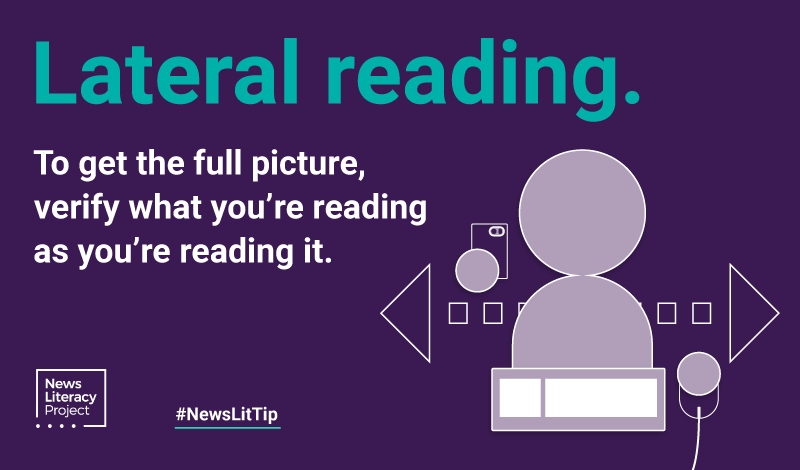Spotting fake news can be hard. Here are some tips to spot fake news:

For more information on spotting fake news, watch this video from factcheck.org.

Learn how to check the credibility of websites with lateral reading. "The lateral reading concept and the term itself developed from research conducted by the Stanford History Education Group (SHEG), led by Sam Wineburg, founder and executive director of SHEG." (News Literacy Project). Lateral reading is a strategy to see if a source is credible, by checking to see what other trusted websites say about the unknown source.
Expand your view with lateral reading
Video: Check yourself with Lateral Reading
Video: Example of how to lateral read by the University of Louisville Libraries
